Assalamu Alaikum
everyone,
Hello..!!
My Dear Blurt Friends,
I am @darkclown.
Assalamu Alaikum, I hope you all are fine by the grace of Allah I am also fine. The post that I will share with you today is about "Life cycle of an ant."
THE ANT:
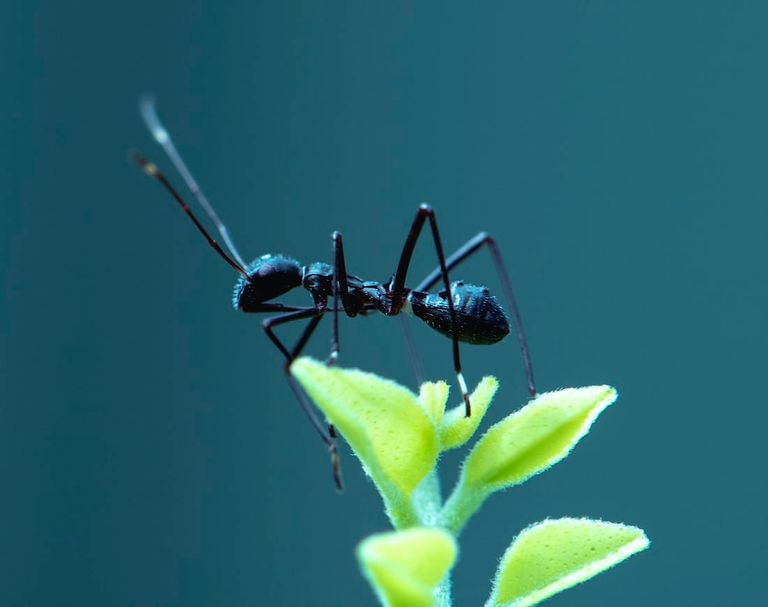
Source
Ants are eusocial insects of the family Formicidae and, along with the related wasps and bees, belong to the order Hymenoptera. Ants evolved from vespoid wasp ancestors in the Cretaceous period, and diversified after the rise of flowering plants. More than 13,800 of an estimated total of 22,000 species have been classified. They are easily identified by their geniculate (elbowed) antennae and the distinctive node-like structure that forms their slender waists.
Scientific classificatione:
Kingdom:
Animalia
Phylum:
Arthropoda
Class:
Insecta
Order:
Hymenoptera
Infraorder:
Aculeata
Superfamily:
Formicoidea
Family:
Formicidae
Latreille, 1809
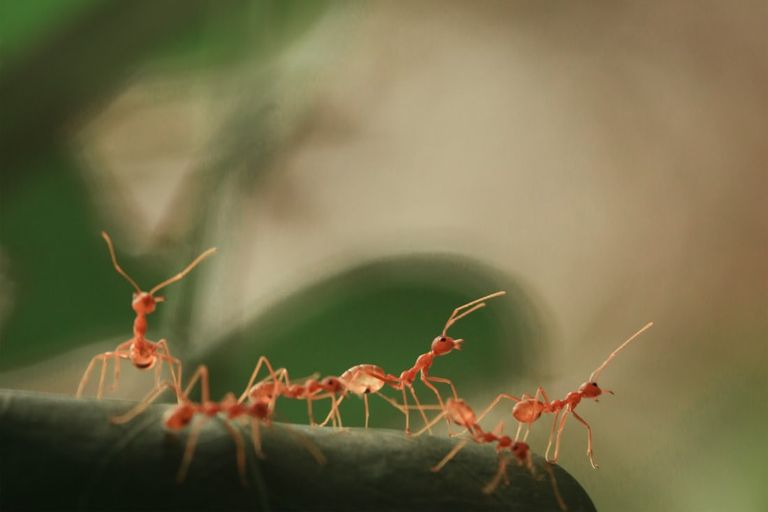
Source
Ants form colonies that range in size from a few dozen predatory individuals living in small natural cavities to highly organised colonies that may occupy large territories and consist of millions of individuals. Larger colonies consist of various castes of sterile, wingless females, most of which are workers (ergates), as well as soldiers (dinergates) and other specialised groups. Nearly all ant colonies also have some fertile males called "drones" and one or more fertile females called "queens" (gynes). The colonies are described as superorganisms because the ants appear to operate as a unified entity, collectively working together to support the colony.
Ants have colonised almost every landmass on Earth. The only places lacking indigenous ants are Antarctica and a few remote or inhospitable islands. Ants thrive in most ecosystems and may form 15–25% of the terrestrial animal biomass. Their success in so many environments has been attributed to their social organisation and their ability to modify habitats, tap resources, and defend themselves. Their long co-evolution with other species has led to mimetic, commensal, parasitic, and mutualistic relationships.
Ant societies have division of labour, communication between individuals, and an ability to solve complex problems. These parallels with human societies have long been an inspiration and subject of study. Many human cultures make use of ants in cuisine, medication, and rites. Some species are valued in their role as biological pest control agents. Their ability to exploit resources may bring ants into conflict with humans, however, as they can damage crops and invade buildings. Some species, such as the red imported fire ant (Solenopsis invicta) of South America, are regarded as invasive species in other parts of the world, establishing themselves in areas where they have been introduced accidentally.
Etymology:
The word ant and the chiefly dialectal form emmet come from ante, emete of Middle English, which come from ǣmette of Old English; these are all related to Low Saxon e(e)mt, empe and varieties (Old Saxon emeta) and to German Ameise (Old High German āmeiza). All of these words come from West Germanic *ǣmaitjōn, and the original meaning of the word was "the biter" (from Proto-Germanic *ai-, "off, away" + *mait- "cut"). The family name Formicidae is derived from the Latin formīca ("ant") from which the words in other Romance languages, such as the Portuguese formiga, Italian formica, Spanish hormiga, Romanian furnică, and French fourmi are derived. It has been hypothesised that a Proto-Indo-European word *morwi- was used, cf. Sanskrit vamrah, Greek μύρμηξ mýrmēx, Old Church Slavonic mraviji, Old Irish moirb, Old Norse maurr, Dutch mier, Swedish myra, Danish myre, Middle Dutch miere, Crimean Gothic miera.
Taxonomy and evolution:
Phylogenetic position of the Formicidae.The family Formicidae belongs to the order Hymenoptera, which also includes sawflies, bees, and wasps. Ants evolved from a lineage within the stinging wasps, and a 2013 study suggests that they are a sister group of the Apoidea. In 1966, E. O. Wilson and his colleagues identified the fossil remains of an ant (Sphecomyrma) that lived in the Cretaceous period. The specimen, trapped in amber dating back to around 92 million years ago, has features found in some wasps, but not found in modern ants. Sphecomyrma was possibly a ground forager, while Haidomyrmex and Haidomyrmodes, related genera in subfamily Sphecomyrminae, are reconstructed as active arboreal predators. Older ants in the genus Sphecomyrmodes have been found in 99 million year-old amber from Myanmar. A 2006 study suggested that ants arose tens of millions of years earlier than previously thought, up to 168 million years ago. After the rise of flowering plants about 100 million years ago they diversified and assumed ecological dominance around 60 million years ago. Some groups, such as the Leptanillinae and Martialinae, are suggested to have diversified from early primitive ants that were likely to have been predators underneath the surface of the soil.
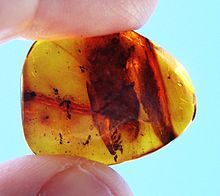
Source
Ants fossilised in Baltic amber
During the Cretaceous period, a few species of primitive ants ranged widely on the Laurasian supercontinent (the Northern Hemisphere). Their representation in the fossil record is poor, in comparison to the populations of other insects, representing only about 1% of fossil evidence of insects in the era. Ants became dominant after adaptive radiation at the beginning of the Paleogene period. By the Oligocene and Miocene, ants had come to represent 20–40% of all insects found in major fossil deposits. Of the species that lived in the Eocene epoch, around one in 10 genera survive to the present. Genera surviving today comprise 56% of the genera in Baltic amber fossils (early Oligocene), and 92% of the genera in Dominican amber fossils (apparently early Miocene).
Termites live in colonies and are sometimes called ‘white ants’, but termites are not ants. They are the sub-order Isoptera, and together with cockroaches they form the order Blattodea. Blattodeans are related to mantids, crickets, and other winged insects that do not undergo full metamorphosis. Like ants, termites are eusocial, with sterile workers, but they differ greatly in the genetics of reproduction. The similarity of their social structure to that of ants is attributed to convergent evolution. Velvet ants look like large ants, but are wingless female wasps.
Distribution and diversity:
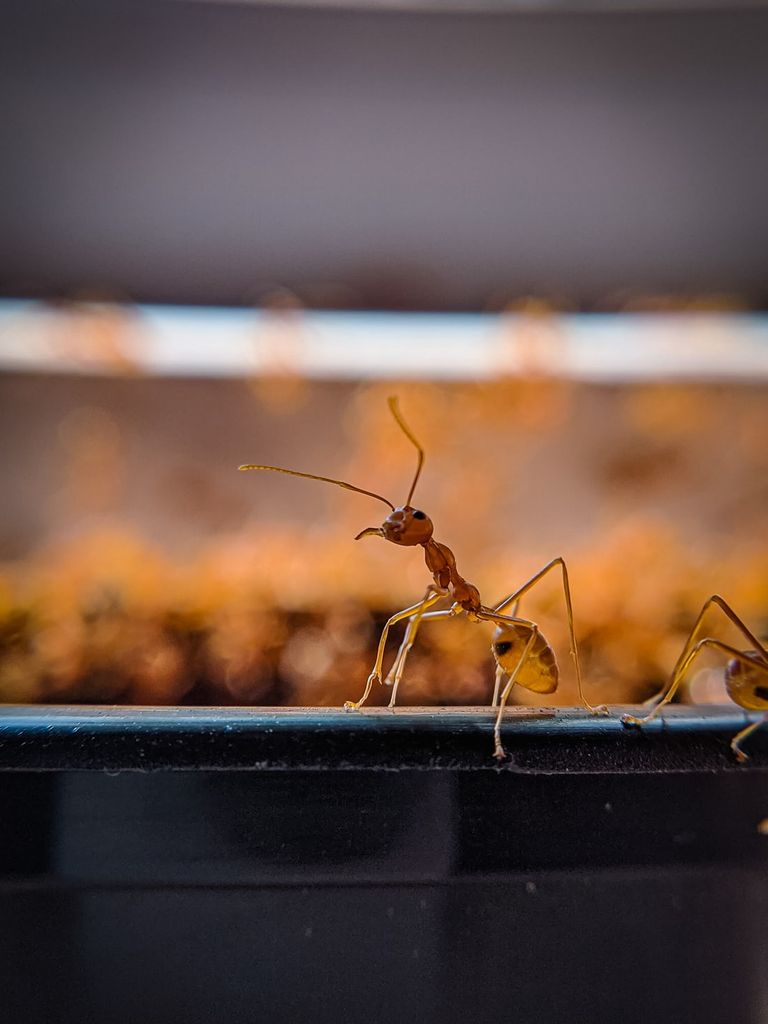
Source
Ants have a cosmopolitan distribution. They are found on all continents except Antarctica, and only a few large islands, such as Greenland, Iceland, parts of Polynesia and the Hawaiian Islands lack native ant species. Ants occupy a wide range of ecological niches and exploit many different food resources as direct or indirect herbivores, predators and scavengers. Most ant species are omnivorous generalists, but a few are specialist feeders. Their ecological dominance is demonstrated by their biomass: ants are estimated to contribute 15–20 % (on average and nearly 25% in the tropics) of terrestrial animal biomass, exceeding that of the vertebrates.
Ants range in size from 0.75 to 52 millimetres (0.030–2.0 in), the largest species being the fossil Titanomyrma giganteum, the queen of which was 6 cm (2+1⁄2 in) long with a wingspan of 15 cm (6 in). Ants vary in colour; most ants are red or black, but a few species are green and some tropical species have a metallic lustre. More than 13,800 species are currently known (with upper estimates of the potential existence of about 22,000; see the article List of ant genera), with the greatest diversity in the tropics. Taxonomic studies continue to resolve the classification and systematics of ants. Online databases of ant species, including AntWeb and the Hymenoptera Name Server, help to keep track of the known and newly described species. The relative ease with which ants may be sampled and studied in ecosystems has made them useful as indicator species in biodiversity studies.
Life cycle:
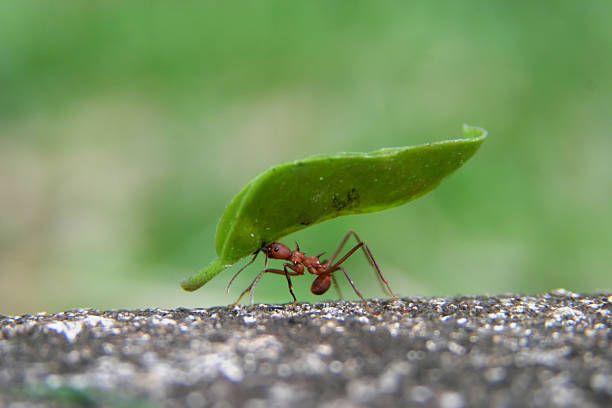
Source
The life of an ant starts from an egg; if the egg is fertilised, the progeny will be female diploid, if not, it will be male haploid. Ants develop by complete metamorphosis with the larva stages passing through a pupal stage before emerging as an adult. The larva is largely immobile and is fed and cared for by workers. Food is given to the larvae by trophallaxis, a process in which an ant regurgitates liquid food held in its crop. This is also how adults share food, stored in the "social stomach". Larvae, especially in the later stages, may also be provided solid food, such as trophic eggs, pieces of prey, and seeds brought by workers.
The larvae grow through a series of four or five moults and enter the pupal stage. The pupa has the appendages free and not fused to the body as in a butterfly pupa. The differentiation into queens and workers (which are both female), and different castes of workers, is influenced in some species by the nutrition the larvae obtain. Genetic influences and the control of gene expression by the developmental environment are complex and the determination of caste continues to be a subject of research. Winged male ants, called drones (termed "aner" in old literature), emerge from pupae along with the usually winged breeding females. Some species, such as army ants, have wingless queens. Larvae and pupae need to be kept at fairly constant temperatures to ensure proper development, and so often are moved around among the various brood chambers within the colony.
A new ergate spends the first few days of its adult life caring for the queen and young. She then graduates to digging and other nest work, and later to defending the nest and foraging. These changes are sometimes fairly sudden, and define what are called temporal castes. An explanation for the sequence is suggested by the high casualties involved in foraging, making it an acceptable risk only for ants who are older and are likely to die soon of natural causes.
Ant colonies can be long-lived. The queens can live for up to 30 years, and workers live from 1 to 3 years. Males, however, are more transitory, being quite short-lived and surviving for only a few weeks. Ant queens are estimated to live 100 times as long as solitary insects of a similar size.
Ants are active all year long in the tropics, but, in cooler regions, they survive the winter in a state of dormancy known as hibernation. The forms of inactivity are varied and some temperate species have larvae going into the inactive state (diapause), while in others, the adults alone pass the winter in a state of reduced activity.
Reproduction:
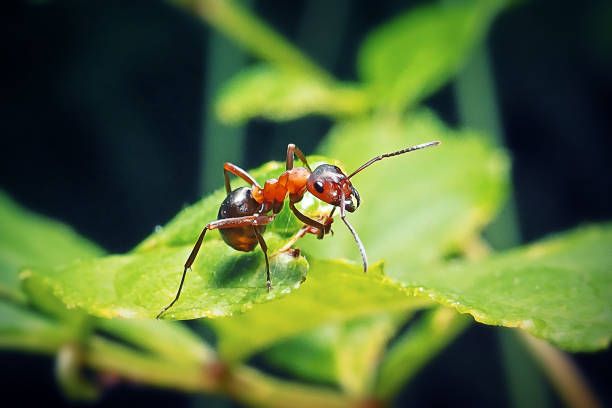
Source
A wide range of reproductive strategies have been noted in ant species. Females of many species are known to be capable of reproducing asexually through thelytokous parthenogenesis. Secretions from the male accessory glands in some species can plug the female genital opening and prevent females from re-mating. Most ant species have a system in which only the queen and breeding females have the ability to mate. Contrary to popular belief, some ant nests have multiple queens, while others may exist without queens. Workers with the ability to reproduce are called "gamergates" and colonies that lack queens are then called gamergate colonies; colonies with queens are said to be queen-right.
Drones can also mate with existing queens by entering a foreign colony, such as in army ants. When the drone is initially attacked by the workers, it releases a mating pheromone. If recognized as a mate, it will be carried to the queen to mate. Males may also patrol the nest and fight others by grabbing them with their mandibles, piercing their exoskeleton and then marking them with a pheromone. The marked male is interpreted as an invader by worker ants and is killed.
Most ants are univoltine, producing a new generation each year. During the species-specific breeding period, winged females and winged males, known to entomologists as alates, leave the colony in what is called a nuptial flight. The nuptial flight usually takes place in the late spring or early summer when the weather is hot and humid. Heat makes flying easier and freshly fallen rain makes the ground softer for mated queens to dig nests. Males typically take flight before the females. Males then use visual cues to find a common mating ground, for example, a landmark such as a pine tree to which other males in the area converge. Males secrete a mating pheromone that females follow. Males will mount females in the air, but the actual mating process usually takes place on the ground. Females of some species mate with just one male but in others they may mate with as many as ten or more different males, storing the sperm in their spermathecae. In Cardiocondyla elegans, workers may transport newly emerged queens to other conspecific nests where wingless males from unrelated colonies can mate with them, a behavioural adaptation that may reduce the chances of inbreeding.
Mated females then seek a suitable place to begin a colony. There, they break off their wings using their tibial spurs and begin to lay and care for eggs. The females can selectively fertilise future eggs with the sperm stored to produce diploid workers or lay unfertilized haploid eggs to produce drones. The first workers to hatch are known as nanitics, and are weaker and smaller than later workers, but they begin to serve the colony immediately. They enlarge the nest, forage for food, and care for the other eggs. Species that have multiple queens may have a queen leaving the nest along with some workers to found a colony at a new site, a process akin to swarming in honeybees.
This is information link:
Source
I hope you all are like this post.
Thanks for reading this post ...
@darkclown
Good